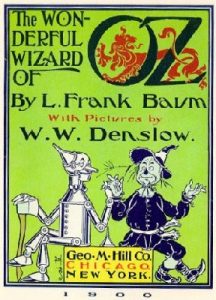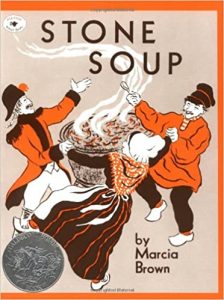The Russian literary giant Leo Tolstoy is among the many, many writers credited with the observation: “All great literature is one of two stories; a man goes on a journey or a stranger comes to town.” The second class of story—a stranger comes to town—earns its power in the ability of an outsider to disrupt the routines, traditions, and values of an otherwise stable community.
No other genre has embraced the stranger-comes-to-town story quite like crime fiction. Crimes, both in real life or in fiction, destabilize communities. Crimes, both solved and unsolved, causes mistrust and fear. The burglar causes communities to lock their doors each night. The serial killer causes frightened men and women to cast a glance over their shoulder and to doubt their neighbors.
But, even within the family of crime fiction, one type of stranger stands alone. The con artist, confidence man, is a stranger perfected in the forge of American literature. The con artist builds trust through deceit and then betrays that trust for personal gain.
As a criminal-defense attorney, I’ve met my fair share of flim flam men. They’re often men who are charming, charismatic, earnest and empathetic. Most are small-time grifters, the small fry who Flannery O’Connor adored, the kind of guy who only wants to separate Grandma from her pension check. But every once in a while, I’d come across a con artist with larger ambitions. They don’t want to trick a single person; they want to swindle an entire community. These con artists inspired the protagonist in my debut novel, The Coyotes of Carthage. Here are seven other fictional con artists; each of whom tried to swindle or exploit an entire community.

7. Oscar Zoroaster Phadrig Isaac Norman Henkle Emmannuel Ambroise Diggs
(The Land of Oz Series, by L. Frank Baum )
Everyone knows the Wizard is the man behind the curtain. But, in the Land of Oz series, we learn that his first name is Oscar and that his initials spell out OZ PINHEAD. He hails from Omaha, where he piloted a hot-air balloon to earn a living. One day, his balloon went off course, and he found himself “floating over a strange and beautiful country.” The natives, seeing him descend from the sky, assume he’s divine, and, according to Oscar, “Of course I let them think so, because they were afraid of me, and promised to do anything I wished them to.”
After he confesses that he’s conned the good people of Oz, Dorothy says, “I think you are a very bad man.” To which Oscar replies, “Oh, no, my dear; I’m really a very good man, but I’m a very bad Wizard…”
A true con to the end.

6. Antoine Lazenec
(Article 353, by Tanguy Viel)
This French bestseller takes the form of a defendant’s confession. But the defendant isn’t the conman, the defendant is the man who murdered the conman. In his own words, Martial Kermeur tells a judge about his relationship with the conman who tried to swindle an entire French town into destroying their cultural heritage and selling their land.
The noir novella explains how an economically ravaged village had fallen upon hard times. The village, located on France’s northern coast, was once a vibrant economy supported, in large part, by a shipyard. But times had changed. The shipyard had shuttered; unemployment was high. “All that’s left are forgotten motions, dusty machines, and missing workers.” Now the town is full of “guys who look too young to be retired…”
So, it’s no surprise when the charismatic and flamboyant Antoine Lazenec shows up, with his pointy shoes and his “shirt collar open like a Parisian.” The villagers are taken with him, and they believe his promise to turn their dilapidated village into a luxury seaside resort. They give him everything he asks for, but, of course, Lazenec is playing them all for fools, and, for that reason, Lazenec must die.

5. Dr. Vladimir Dragan
(The Little Red Chairs, by Edna O’Brien)
In this lyrical novel, a mysterious man arrives in a remote Irish village. The stranger identifies himself as Dr. Vladimir Dragan, and he claims to be a multitalented Montenegro exile. Poet, healer, sex therapist, he says he does it all. He only wants to help the locals enrich their monotonous life, so he swears. To some residents, he even looks the part of their savior, resembling, “a holy man with a white beard and white hair, in a long black coat.”
Some con artists seek fortunes; others seek land or power. Dr. Dragan has a special charm, especially with women, and, in this community, he almost magically awakens women’s sexual desire. And why not? He’s handsome, learned, charismatic, and, most of all, eager to help women explore their sexuality. Even a local nun is not immune to his charms. Dr. Dragan gives her a hot-stone massage, “a wildness such as she had not known since her youth,” an experience that “transports her to the ethereal.”
In reality, Dr. Dragan is a Balkan war criminal on the run, who the world best knows as the Beast of Bosnia. He oversaw the Siege of Sarajevo, and his crimes included “genocide, ethnic cleansing, massacres, tortures, detaining people in camps and displacing hundreds.”

4. Charles Jacobs
(Revival, by Stephen King)
Once, Charles Jacobs was a respected and charismatic preacher, but, after personal tragedy strikes, he loses his faith. He’s expelled from his tiny Maine town after publicly denouncing God and Religion, and he takes to the road and learns the hustle. He assumes a new name and becomes a regular on the state-fair circuit. Now, he is a tent-revival evangelist, using electricity to perform magic and to heal the sick. And he’s real good at the con, working the carnival crowd, combining showmanship and religion, understanding that: “you had to give the rubes at least a little steak to go with the sizzle.” His power as a faith healer causes the sick to flock to him. But, unbeknownst to the sick, his treatments have terrible side effects: sleepwalking, self-mutilation, insanity and suicide. And this charlatan faith healer has darker motives than any of his patients could know.
The book is one of Stephen King’s finest. King called Revival a “nasty, dark piece of work,” and critics declared the ending one of King’s darkest. Even King claimed the book was “too scary. I don’t even want to think about that book anymore.”

3. The Duke and the Dauphin
(The Adventures of Huckleberry Finn, by Mark Twain)
In the first half of the 19th Century, America was obsessed with the con artist. The United States was expanding, and frontier towns, isolated and small, were ripe for the picking. Newspapers of the era detailed the real-world exploits of con artists who glided from town to town, swindling and scamming, their success entirely dependent upon knowing when best to make their exit.
Literature’s best known frontier con men are the Duke and the Dauphin. These two flim flam men join Huck and Jim, a young teen and runaway slave respectively, on their voyage rafting along the Mississippi.
In one scam, the Royal Nonesuch, the two advertised themselves as “World-Renowned Tragedians,” and, they grossly overcharge an all-male audience to attend a play, promising a dramatic performance that was “the most thrillingest one that ever was.” Instead, the two deliver an obscene farce, a performance that last only a few minutes and features the Dauphin “prancing out on all fours, naked.” The crowd realizes that they’ve been suckered. Their first reaction is anger, but they soon realize that their neighbors will judge them poorly for being so easily fooled. So, the crowd decides to publicly praise the show and encourage the entire town to attend. The two con men continue to stage nightly performances, until the community wises up and prepares their revenge. But the Duke and Dauphin are one step ahead, skipping town just in time, on their way to the next hustle.

2. The Soldiers
(Stone Soup)
This eighteenth century folktale is, perhaps, the most intriguing, because we teach this story to children, encouraging them to cheer for the con artists. The story’s most popular version is Marcia Brown’s 1947 Caldecott-winning children’s classic. In this telling, a trio of exhausted war-fatigued soldiers arrive in a small village. The soldiers are desperate for food. They beg. They plead. They get nowhere with the peasant villagers.
Out of options, the soldiers setup a cauldron in the village square and boast that they plan to make a soup fit for a king. They fill the cauldron with water, and they drop in three random stones. The antic gets the attention of the villagers, who ask about the soup. The soldiers, saying they’re happy to share their stone soup, taste the soup and observe that the soup was magnificent, “but, oh, if there were carrots, it would be much better.” Naturally some gullible peasant offers carrots. The soldiers then take another taste, and now they say that the magnificent soup only needs cabbages. This process repeats—with the soldiers asking for beef and potatoes, barley and milk— until the soldiers have tricked the peasants into providing all the ingredients for a soup.
In many tellings, once the soup is finished, the soldiers sell the stones to the villagers. Now that’s a serious con, and we celebrate it with our children.

1. Professor Harold Hill
(The Music Man, Meredith Willson and Franklin Lacey)
Trouble. Trouble. Trouble.
Without a doubt, the most famous con in this category is Professor Harold Hill.
In 1912, Hill arrives in River City, claiming to be a learned and distinguished music professor. He convinces the townsfolk that their young sons are travelers on the road to moral decline. River City, he proclaims, needs to find a way to keep their young one’s moral after school. He proposes the town assemble a boy’s marching band, which, of course, will require the town to purchase band uniforms and instruments. And the town’s just in luck. Hill says he can sell the community everything they need, all the townsfolk must do is pay up-front. But Hill, in truth, is not a professor. Nor is he a musician. He doesn’t even have any band equipment to sell. He’s a bonafide con artist who simply wants to take their money and run.
The Music Man first appeared on Broadway in 1957. The musical, with its catchy songs and clever dialogue, was an instant hit, winning five Tony Awards including Best Musical, beating out another Broadway classic West Side Story. Five years later, Hollywood released the film version. The film, too, was a critical and commercial success, introducing the culture to signature songs like Ya Got Trouble and Seventy-Six Trombones. The Music Man has had remarkable staying power including several Broadway revivals. Last year, Broadway announced yet another revival, this time starring Hugh Jackman as Hill.
Trouble. Trouble. Trouble.
*


















